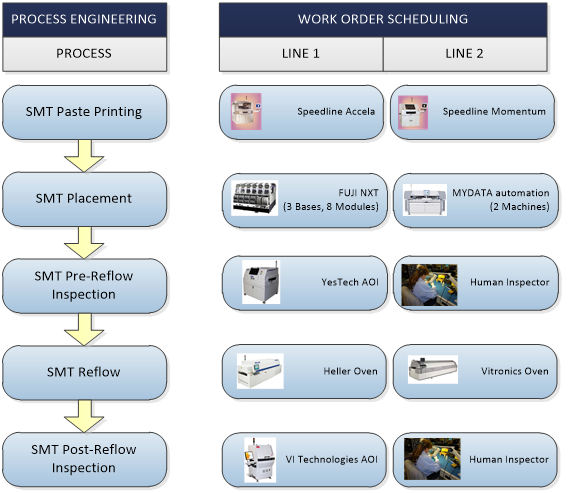Process flows
In FactoryLogix, you model the processes required to build a product, then as production approaches, you map the physical flow to achieve that process. Designing and then planning makes the FactoryLogix system infinitely adaptable to ever-changing resource availability on the factory floor.
All manufacturing has steps in a process. For example, in electronics manufacturing, print, place, and reflow are processes that materials undergo to become a final product. However, those processes are independent of where—or specifically what—machinery or processes the materials must pass through. If the machinery and location in the factory can support a given process, it doesn't typically matter what specific location materials flow through. This concept allows FactoryLogix to separate planning (where the specific locations and assets are decided) from process engineering. This separation makes the system infinitely adaptable to changing conditions and constraints in a factory.

In the NPI client application, a process flow is composed of the operations needed to build a product or assembly. Each operation in a process flow can have one or more steps detailing the tasks required at each operation. Each step can have one or more activities to further detail the tasks to be performed and define any data to be collected during the assembly build. You can create reusable process flow templates in the Templates and Standards area of NPI or directly from within a new process definition.
You can group operations in a process flow, allowing process engineers to define options such as "any order" operations and "or" groups.
In an "any order" group, operations can be completed in any order. "Any-order" operations ensure that all processes within the any-order group are completed before allowing the assembly to pass on to the next operation in the flow.
An example of an "or" group might be where an assembly goes through an inspection process and there are two available inspection methods: automated and manual. The "or" group would allow the assembly to satisfy the routing requirements whether passing through the automated or the manual inspection operation. Operations can be completed in any order.
You can also create reroute flows containing out-of-route operations to allow for special routing such as rework and repair operations.
